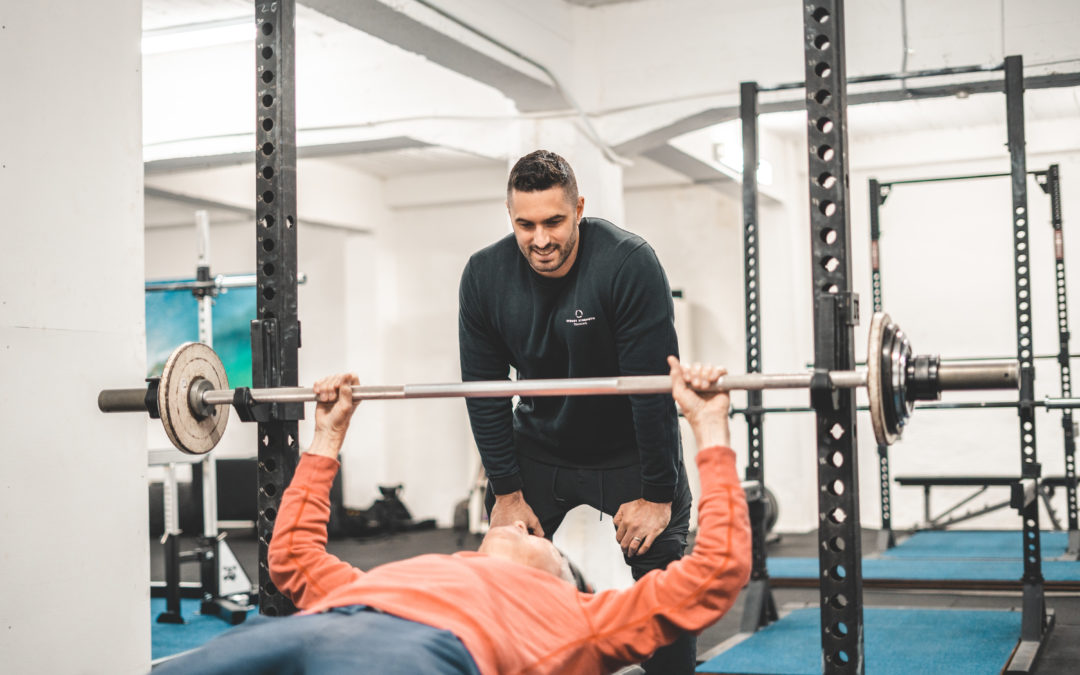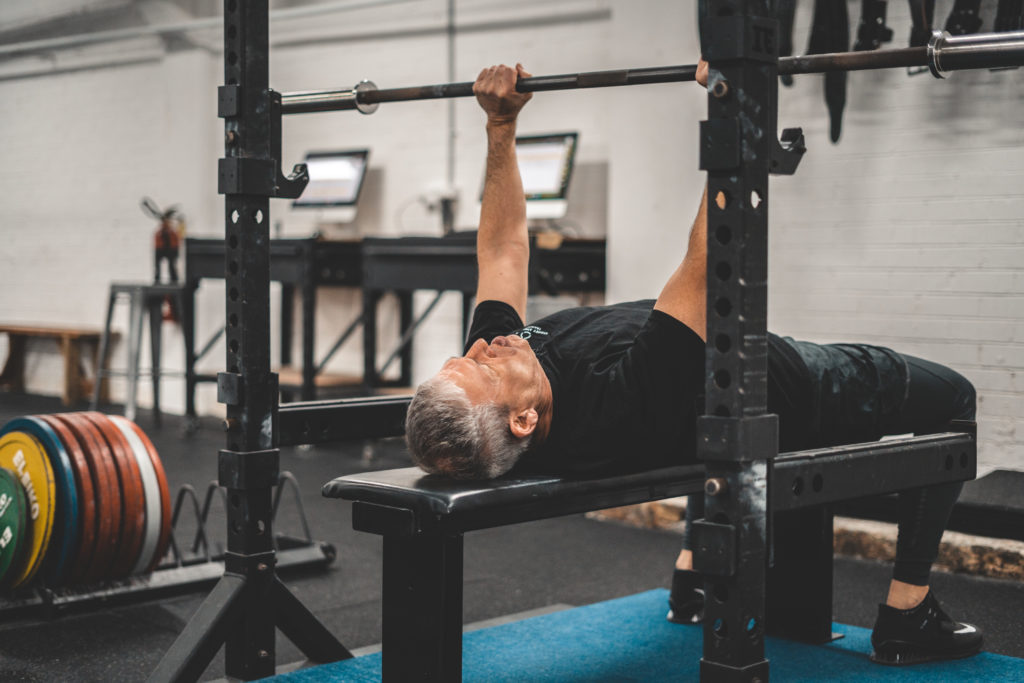Bench Press isn’t just for the bros. If you’ve always struggled with upper body strength, or wanted to perform exercises such as the push-up, the Barbell Bench Press is a fantastic place to start. Upper body pressing movements, like the Bench Press, and its cousin, the Overhead Press, are great ways of training the muscles of the upper body. In particular, they develop the Chest, Shoulder (primarily the front portion) and Triceps muscles (back of the arm). Many people worry however that these exercises are either too challenging or unsafe to perform. Today we’ll discuss set-up during the Bench Press, in particular with attention paid to bar path and back positioning, what the Bench Press targets, and when we should also consider using the Overhead Press.
Bar Path, Back and Barbells
The Barbell Bench Press begins with the lifter lying flat on a bench, eyes positioned just beneath the barbell as it rests on the J-hooks. To start, they unrack the bar and bring it to lockout, where the bar is balanced directly over the shoulders. From a side view, the bar, wrist, elbow, and shoulder should align in a straight line. When lowering the bar, the lifter should aim for the upper chest, not the neck. This is the first key safety consideration. To enhance stability and shorten the range of motion, many lifters squeeze their shoulder blades together, naturally lifting the chest. Placing the feet under or slightly behind the knees creates a slight arch in the lower back. This arch shortens the bar’s range of motion and improves pressing efficiency. Arching the lower back is not harmful—exercise benefits spinal health when workloads increase gradually¹. However, if discomfort arises, adjusting foot position or placing the feet on the bench can reduce lower back stress during the lift.
So, what are you bench pressing (with) bro?
What muscles drive motion during the Bench Press? Three primary muscle groups contribute to the lift. First, the chest muscles, including the Pectoralis Major and Minor, generate pressing force by pulling the elbows towards the centre from when the bar is on the chest. Second, the Triceps, composed of the Short, Lateral, and Long Heads, assist in extending the elbow. Finally, the Deltoid, particularly the Anterior Deltoid, helps with shoulder flexion—pulling the bar upward to lockout. Additionally, the rotator cuff muscles play a stabilizing role, as they do in all upper body movements. The upper back muscles also contribute by positioning the body correctly, reinforcing pressing mechanics, and maintaining the necessary arch.
But what about the risk of shoulder injury? Research on Bench Press mechanics suggests that injury risks to muscle groups like the rotator cuff are difficult to quantify². There are two key reasons for this. First, each lifter must refine their own technique, with biofeedback from training sessions guiding adjustments. Second, gradually increasing workload minimizes the risk of excessive strain. It is well understood that grip width and scapular positioning influence reaction forces in the glenohumeral and acromioclavicular joints². The Bench Press is both safe and effective when performed with proper technique. As with all exercises, we recommend building up to heavier loads progressively after establishing consistency.
The Overhead Press
The Overhead Press is another excellent pressing exercise, though it presents unique challenges. Unlike the Bench Press, it requires lifting the bar further from the centre of mass, with a smaller base of support (standing vs. lying down) and a more demanding bar path. As a result, many lifters find it harder to perform and progress in. Additionally, most people can Overhead Press significantly less weight compared to their Bench Press. Despite this, we consider the Overhead Press a valuable addition to any strength program. It works similar muscle groups as the Bench Press but places greater emphasis on the entire shoulder, upper back (including the trapezius), and the long head of the triceps. Both lifts have their place in training, but if your goal is overall pressing strength, the Bench Press remains a foundational movement.
Final thoughts
If you’re unsure where to start when building pressing strength, the Bench Press is a great place to begin. You can start with lighter dumbbells or a lighter barbell and progressively scale up to an appropriate starting point. While push-ups can also be modified, they require more attention to detail—like adjusting bench height, the position of the knees, and how to lean during each rep. The Bench Press offers a more consistent setup, allowing you to gradually increase loads as small as 1kg at a time. It’s a safe exercise for anyone looking to improve upper body strength.
If you’re interested in improving your Bench Press, contact us today!
References:
- RACGP – Exercise for ongoing low back pain
- Effects of bench press technique variations on musculoskeletal shoulder loads and potential injury risk – PMC

